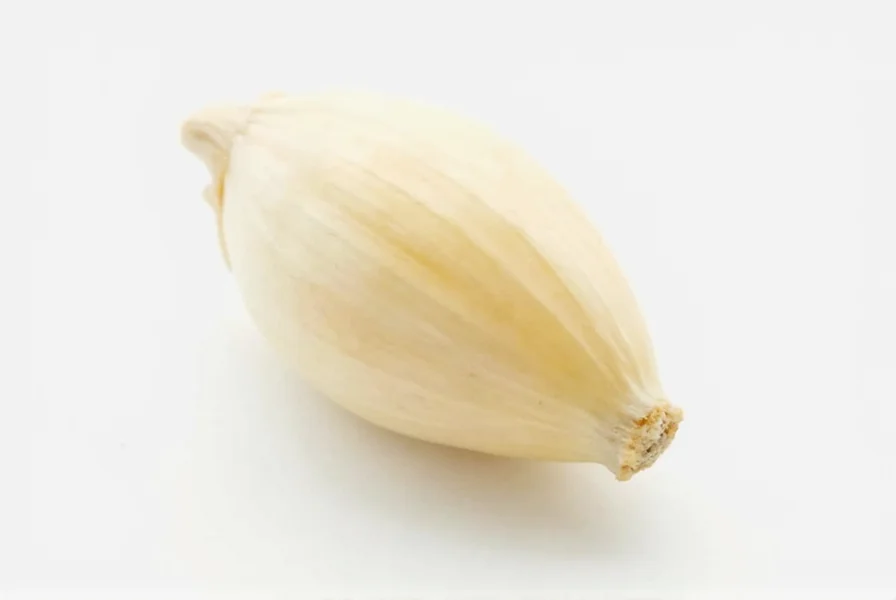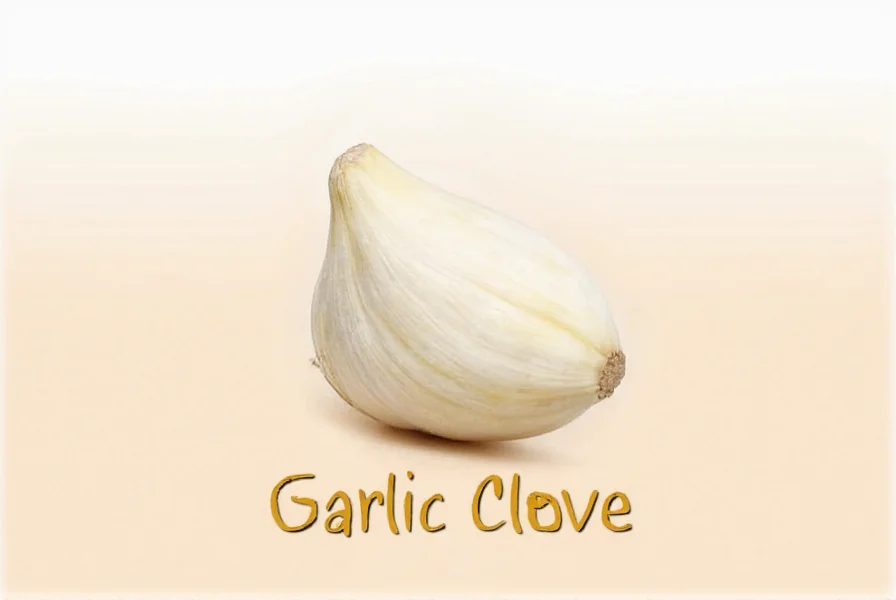Understanding what a garlic clove is essential for both novice and experienced cooks. When you purchase garlic, you're typically buying the entire bulb, which resembles a small, knobby head. Inside this bulb, you'll find multiple individual segments—these are the cloves. Each clove functions as a separate unit that can be peeled, minced, sliced, or used whole in cooking.
Garlic Clove Anatomy and Identification
Garlic cloves have a distinctive teardrop shape with one pointed end and one flat end where they attach to the bulb's central stem. The outer layer consists of a dry, translucent skin that protects the moist, ivory-colored flesh inside. When selecting garlic cloves, look for firmness—soft or shriveled cloves indicate age or improper storage.

How Many Cloves in a Garlic Bulb?
The number of cloves per bulb varies significantly by garlic variety:
| Garlic Type | Average Cloves Per Bulb | Clove Size |
|---|---|---|
| Softneck Garlic | 10-20 | Small to medium |
| Hardneck Garlic | 4-12 | Larger, more uniform |
| Elephant Garlic | 4-6 | Very large (milder flavor) |
Softneck varieties (the most common grocery store type) typically contain more but smaller cloves, while hardneck varieties have fewer but larger cloves. This distinction matters when following recipes that specify "1 clove" without weight measurements.
Garlic Clove Measurement Equivalents
Understanding garlic clove measurements helps ensure recipe accuracy. While size varies, these general equivalents apply to medium-sized cloves:
- 1 fresh garlic clove ≈ 1/2 teaspoon minced garlic
- 1 fresh garlic clove ≈ 1/8 teaspoon garlic powder
- 1 fresh garlic clove ≈ 1/2 teaspoon garlic paste
- 3-4 medium cloves ≈ 1 tablespoon minced garlic
For precise cooking, especially in delicate dishes, consider weighing cloves. A medium garlic clove typically weighs 5-7 grams (peeled).
Culinary Applications of Garlic Cloves
Chefs utilize whole garlic cloves, sliced cloves, or minced cloves differently based on desired flavor intensity and texture:
- Whole cloves provide subtle flavor when roasted or simmered in soups and stews
- Sliced cloves offer moderate flavor release in stir-fries and sautés
- Minced or crushed cloves deliver maximum pungency for sauces, marinades, and dressings
The enzymatic reaction that creates garlic's characteristic flavor begins when cells are ruptured through cutting or crushing. For strongest flavor, allow minced garlic to rest 10 minutes before cooking to fully develop its compounds.
Storage Tips for Maximum Freshness
Proper storage extends the shelf life of both whole bulbs and separated cloves:
- Store unpeeled bulbs in a cool, dark, well-ventilated place (not the refrigerator)
- Once separated from the bulb, individual cloves last 3-7 days at room temperature
- Peeled cloves can be stored in olive oil in the refrigerator for up to 2 weeks
- Freeze peeled cloves in an airtight container for up to 6 months
Signs of spoiled garlic include brown spots, green sprouts in the center, soft texture, or sour smell. While green sprouts are edible, they indicate aging and may have a slightly bitter taste.
Garlic Clove Substitutes
When fresh cloves aren't available, these alternatives work in most recipes:
- Garlic powder (use 1/8 teaspoon per clove)
- Garlic salt (reduce additional salt in recipe)
- Pre-minced garlic in jars (1/2 teaspoon per clove)
- Garlic-infused oils for milder flavor
Remember that processed garlic products lack the complexity of fresh cloves but provide convenience. For authentic flavor in traditional dishes, fresh garlic cloves remain unmatched.
Frequently Asked Questions
How can you tell if a garlic clove has gone bad?
A spoiled garlic clove feels soft or mushy when squeezed, shows brown or black spots, develops a sour or unpleasant odor, or has significant green sprouting in the center. While minor sprouting is edible, extensive sprouting indicates aging and diminished quality.
What's the difference between a garlic clove and a garlic bulb?
A garlic bulb (often called a head of garlic) is the entire rounded cluster you purchase, typically containing 10-20 individual segments. Each separate segment within the bulb is a garlic clove. The bulb serves as protective packaging for the cloves, which are the actual edible units used in cooking.
How many teaspoons is one garlic clove when minced?
One medium garlic clove yields approximately 1/2 teaspoon of minced garlic. Larger cloves may produce up to 3/4 teaspoon, while smaller cloves yield closer to 1/3 teaspoon. For precise measurement in sensitive recipes, weighing the clove (typically 5-7 grams peeled) provides the most accurate results.
Can you eat garlic cloves raw?
Yes, you can eat garlic cloves raw, though they have a much stronger, sharper flavor than when cooked. Raw garlic contains allicin, which provides health benefits but can cause digestive discomfort for some people when consumed in large quantities. Crushing raw garlic and letting it sit for 10 minutes before consumption maximizes its beneficial compounds.
Why do some garlic cloves sprout green shoots?
Garlic cloves sprout green shoots as they age and begin to grow. This indicates the clove is still alive and attempting to produce a new plant. While edible, sprouted garlic often has a slightly bitter taste. Remove the green sprout (which is more bitter than the clove itself) before using if you prefer milder flavor. Proper storage in cool, dark conditions slows sprouting.











 浙公网安备
33010002000092号
浙公网安备
33010002000092号 浙B2-20120091-4
浙B2-20120091-4